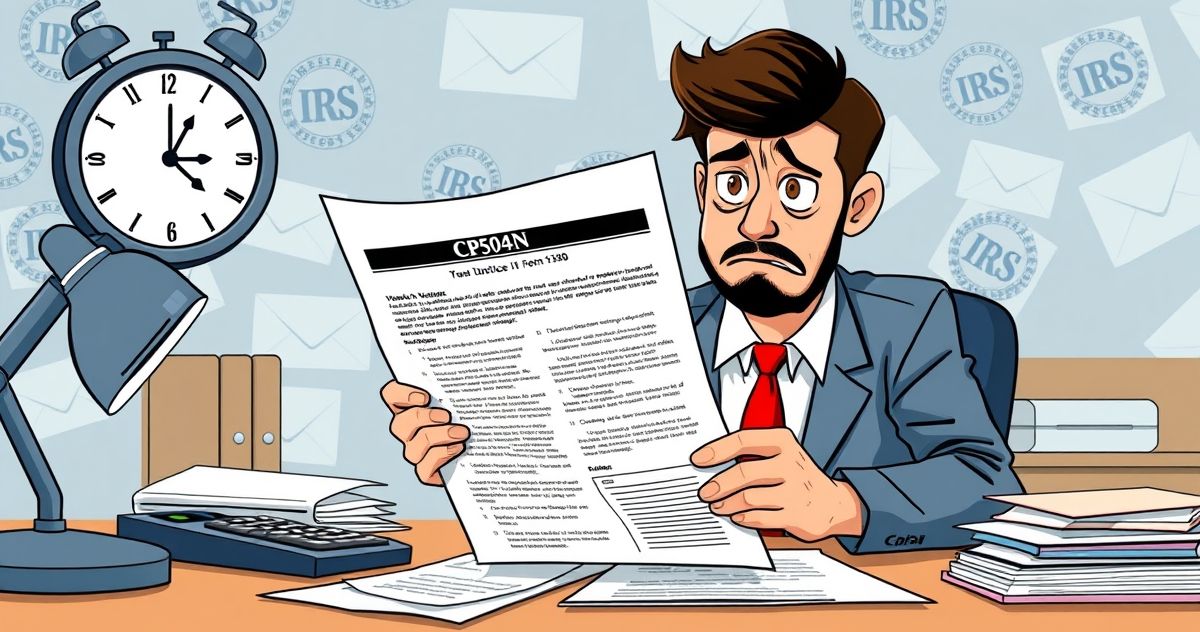Understanding the CP504AN Notice: A Comprehensive Guide
The CP504AN Notice is an official communication from the Internal Revenue Service (IRS) that plays a vital role in tax compliance and resolution. This notice is a reminder—sometimes perceived as a stark warning—indicating that a taxpayer has an unpaid balance. It is critical to comprehend the implications and required actions upon receiving this document to prevent further IRS enforcement actions.
What is the CP504AN Notice?
The CP504AN Notice, often referred to simply as the CP504 Notice, serves multiple purposes in the tax collection process. Primarily, it informs the taxpayer of an outstanding tax balance and constitutes a formal demand for payment. This notice is not just a casual reminder; it is, in fact, a critical precursor to more severe collection measures, such as tax liens or levies.
Upon receiving this notice, a taxpayer is alerted that failure to address the unpaid balance will lead to interception of state tax refunds. The IRS emphasizes urgency, indicating that immediate action is required to prevent escalated collection efforts.
Key Features of the CP504AN Notice
- Demand for Payment: The foremost feature of this notice is its demand for immediate payment of the listed tax balance.
- Notification of State Tax Interception: The notice explicitly states the IRS’s intent to seize state income tax refunds to cover the outstanding federal tax debt if it isn’t promptly paid.
- Interest and Penalties: The CP504AN clearly lays out the interest accruing on the unpaid tax, along with penalties that continue to accumulate until the balance is settled.
- Contact Information: It provides the necessary contact details for the IRS and instructions for how payment can be made or disputes can be handled.
Important Filing and Compliance Requirements
Upon receipt of the CP504AN Notice, it is crucial for taxpayers to review their tax records and determine the accuracy of the IRS’s claims. The following steps are recommended:
- Verify the Balance: Cross-check the outstanding amount with your own tax records to confirm its accuracy.
- Contact the IRS: If discrepancies are found or if further clarification is required, contact the IRS promptly using the contact information provided in the notice.
- Consider Payment Options: If you agree with the IRS assessment, arrange for immediate payment or establish a payment plan. The IRS offers several payment solutions that can be found on their official website.
Penalties and Consequences for Non-Compliance
Failing to respond to or settle the balance indicated in the CP504AN Notice can lead to significant consequences:
- State Tax Refund Interception: As previously mentioned, the IRS will intercept your state tax refunds to cover the federal tax debt.
- Federal Tax Lien: Continued neglect may result in the IRS filing a Notice of Federal Tax Lien, which can severely impact your credit score and ability to secure loans or leases.
- Levy Actions: If unresolved, the IRS may proceed to levy your bank accounts or wages.
The Significance of the CP504AN Notice
The CP504AN Notice is a crucial document for any taxpayer because it serves as a final call to resolve outstanding tax debts before severe measures are taken. It helps in maintaining compliance while fostering a proactive approach to managing tax obligations. It encourages taxpayers to address debts quickly, ultimately supporting financial stability and compliance with federal tax responsibilities.
Understanding the implications of this notice and taking immediate action is paramount. By paying the balance or engaging with the IRS to discuss manageable payment plans, taxpayers can avoid further enforcement actions. This proactive stance not only resolves the immediate concerns but also supports ongoing financial health.
Conclusion
The CP504AN Notice should not be underestimated. It stands as a vessel for clear communication from the IRS that requires swift attention. Taxes are a pivotal aspect of financial management, and ignoring such overdue responsibilities can lead to substantial negative repercussions—both financially and legally.
In conclusion, ensuring timely action on a CP504AN Notice can save taxpayers from more invasive IRS actions. Understanding its purpose, components, and effective strategies for resolution can arm taxpayers with the knowledge necessary to maintain control of their financial obligations while positioning themselves favorably with the IRS.

